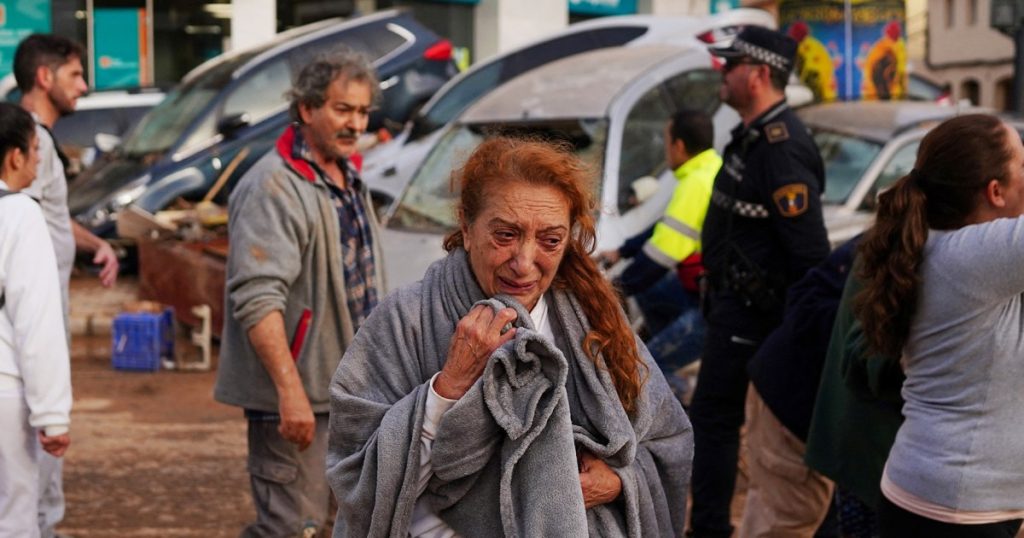Desperate rescue efforts were underway in southern and eastern Spain following devastating floods that killed at least 95 people, with the death toll expected to rise. Images from Valencia showed cars wedged atop one another after being carried by a wave of mud and debris into narrow city streets. Transport Minister Óscar Puente reported that there were dead people inside some vehicles. The torrential rain caused a year’s worth of rainfall to fall in just eight hours in some areas, leading to the worst natural disaster in Spain’s modern history.
The floods wreaked havoc across the region, with homes destroyed and infrastructure damaged. Rescue workers were working tirelessly to locate survivors and provide aid to those affected by the disaster. The scale of the destruction caused by the floods was immense, with entire neighborhoods underwater and people stranded on rooftops awaiting rescue. The unprecedented rainfall overwhelmed drainage systems and rivers, causing widespread flooding and chaos.
Emergency services were stretched to their limits as they responded to calls for help from trapped residents. Helicopters were deployed to airlift people to safety, while boats navigated flooded streets to reach those in need of assistance. The government activated the military to assist in the rescue efforts, deploying troops to the worst-hit areas to provide support and aid in the evacuation of residents. The catastrophic flooding left many communities isolated and cut off from essential services, requiring a coordinated response from authorities and emergency services to ensure the safety and well-being of those affected.
The tragic loss of life in the floods underscored the urgent need for improved disaster preparedness and response mechanisms in Spain. Climate change is increasingly leading to extreme weather events, such as heavy rainfall and flooding, which pose a significant threat to vulnerable communities. The devastating floods served as a stark reminder of the importance of investing in infrastructure, early warning systems, and emergency response capabilities to mitigate the impact of natural disasters and protect lives. The government faced calls for greater investment in flood prevention measures and improved coordination between authorities at the local, regional, and national levels to ensure a more effective response to such emergencies in the future.
The aftermath of the floods left communities reeling from the destruction and loss of life, with many facing an uncertain future. The road to recovery would be long and challenging, requiring a concerted effort by government agencies, non-profit organizations, and volunteers to provide humanitarian assistance and support to those affected. Relief efforts focused on providing emergency shelter, food, water, and medical aid to displaced residents, as well as helping communities rebuild and recover from the disaster. The resilience and solidarity displayed by the Spanish people in the face of adversity highlighted the strength of community spirit and the power of coming together in times of crisis to overcome challenges and rebuild lives.
As the floodwaters receded and the extent of the damage became clear, the focus shifted to rebuilding infrastructure and implementing measures to prevent future disasters. The catastrophic floods served as a wake-up call for Spain to prioritize climate resilience and disaster risk reduction in its urban planning and development strategies. By investing in sustainable infrastructure, flood prevention measures, and early warning systems, the country could better protect its communities from the impacts of extreme weather events and reduce the risk of similar disasters occurring in the future. The tragic events highlighted the need for proactive and inclusive approaches to disaster management that prioritize the safety and well-being of all citizens, particularly those most vulnerable to the impacts of climate change.













